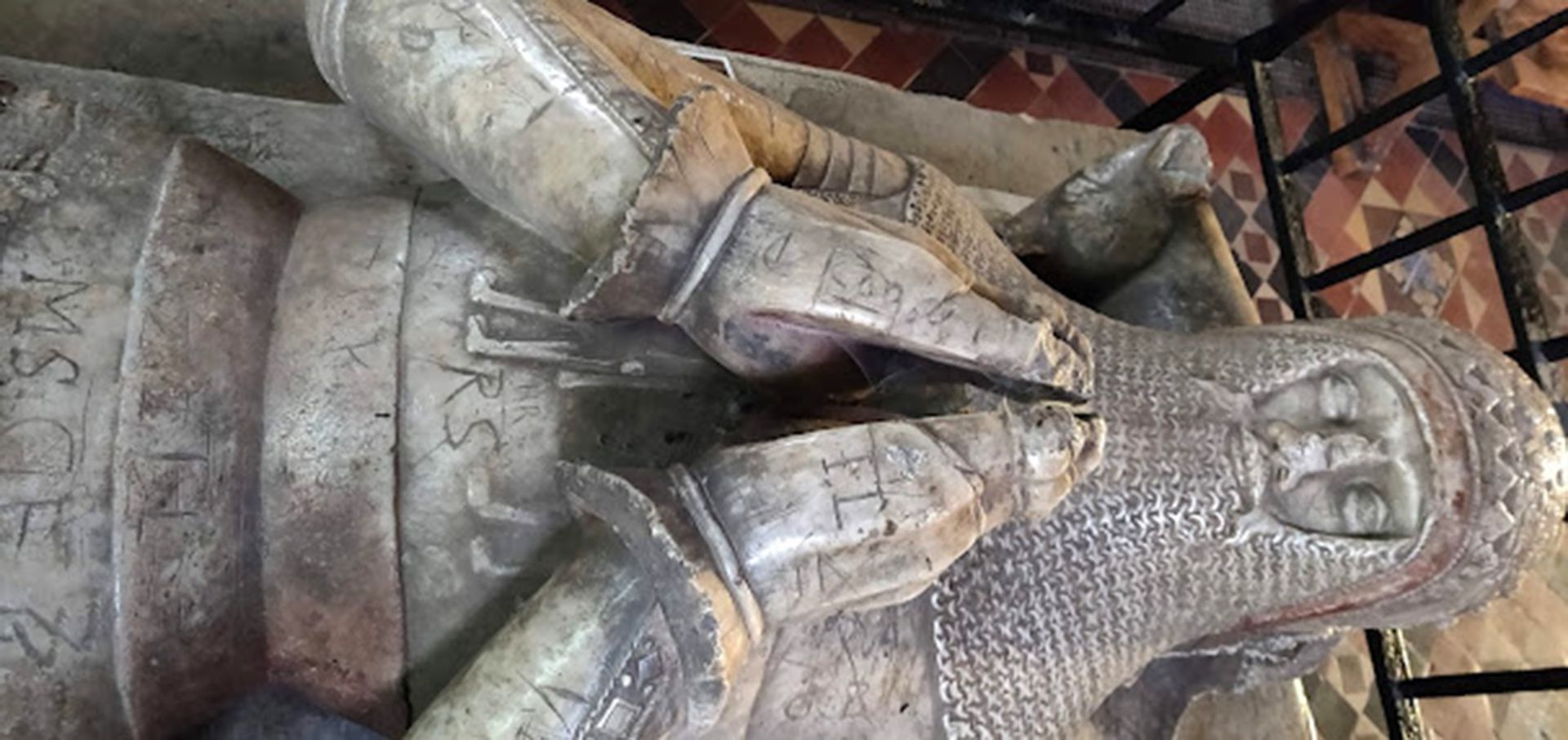
Effigy of Sir Hugh Calveley (d.1394), St Boniface’s Church, Bunbury, Cheshire
Sir Hugh de Calveley
The name Sir Hugh de Calveley crops up in several places in this exhibition and for good reason.
Ever since Steventon can be recognised as a single farming estate, it has been owned by absentee Lords. Some of these ‘Lords of the Manor’ were the most powerful people in the land and included King Harold (he who was hit by an arrow in the eye at the battle of Hastings; William the Conqueror, and Henry I. Other ‘Lords of the Manor’ included great ecclesiastical institutions such as the famous Abbey of Bec in Normandy, and Westminster Cathedral, and most recently, the Church Commissioners of the Church of England.
However, for fifteen years at the end of the 14th century (1378 to 1383) the people of Steventon were the feudal tenants of one of the great characters of English history: Sir Hugh de Calveley.
Hero of The Hundred Years War
Sir Hugh was a hero of The Hundred Years War, fought between England and France between 1337 and 1453. He was an outstanding in so many ways, not least as he was reputed to be seven feet tall. Starting as an ordinary esquire in the army of Edward, The Black Prince (son of King Edward III), his prowess on the battlefield impressed all and sundry, not least the most famous of all French knights, Bertrand du Guesclin. The pair became firm friends despite their adversary on the battlefield.
Sir Hugh became so respected that he was able to acquire his own private army of soldiers. Although always loyal to The Black Prince and always at his service, Sir Hugh and his men would fight for the highest bidder when not required by the English crown. He had the best of all worlds, being rewarded with prestigious posts by Edward III (Captain of Brest, Captain of Calais, Warden of the Isles, Admiral of the Fleet) and making a fortune out of his less salubrious activities.
Sir Hugh acquires Steventon
As he approached retirement, it seems that Sir Hugh aimed to put together an investment portfolio to give him a decent income in old age. Thus, when French fortunes were at their lowest ebb and the English crown kept confiscating the incomes from French estates in England, the Abbot of Bec decided it was time to cut his losses and dispose of the Manor of Steventon. Sir Hugh snapped it up. Like all the other Lords of Steventon, he was mostly absent from our village, either still engaged in fighting the French or retiring to his home lands of Cheshire.
His legacy
He did leave us one great legacy at least. He invested in land and property to secure his retirement, but for the afterlife, he invested in the goodwill of God. The result was a handsomely restored St Michael’s church, a project that was designed to secure Sir Hugh’s soul after death, but had the benefit for us today of providing a beautiful church built on solid foundations, that over six hundred years later, is still a focal point of village life.
The original document recording the 1385 final grant of Steventon to Sir Hugh by the Prior of the Blessed Mary of Pré (a cell of the Abbey of Bec) is held in the archives of Westminster Abbey.